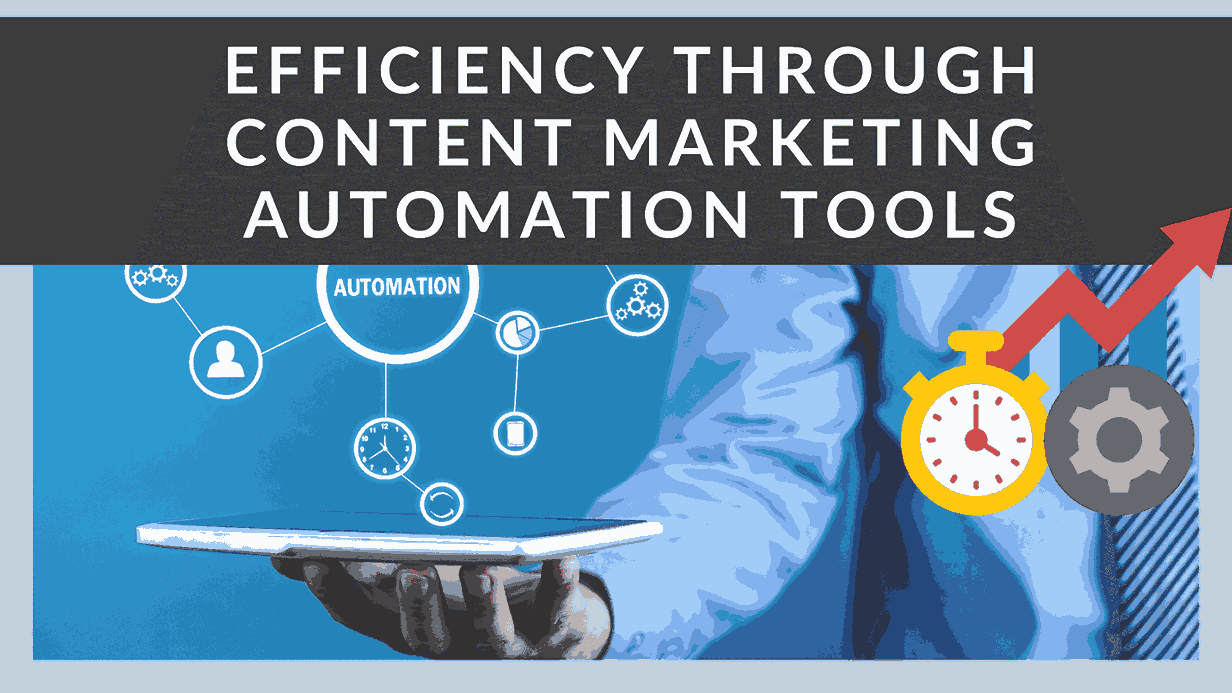Efficiency through content marketing automation tools
-


In the ever-evolving landscape of digital marketing, efficiency is the name of the game. Marketers are constantly seeking ways to streamline their processes, reach a wider audience, and, ultimately, achieve better results. Content marketing automation tools have emerged as invaluable assets in this pursuit, helping businesses optimize their strategies, save time, and enhance engagement. In this article, we’ll explore one crucial aspect of content marketing optimization: A/B testing, and how automation tools are revolutionizing this process.
A/B Testing and Optimization
A/B testing, also known as split testing, is a critical component of content marketing optimization. It involves comparing two or more variations of content to determine which one resonates best with your audience. This iterative process helps refine content strategies, resulting in improved engagement and higher conversion rates. However, manually conducting A/B tests can be time-consuming and complex, especially for larger marketing campaigns. This is where automation tools come to the rescue, making A/B testing more straightforward and efficient.
The Role of Automation Tools in A/B Testing
Automation tools provide a seamless way to conduct A/B testing by simplifying the entire process. Marketers can create multiple versions of content, such as emails, landing pages, advertisements, or any other marketing collateral, and set up tests to deliver these variants to different segments of their audience. These automation platforms offer a user-friendly interface, making it easy to configure tests and monitor their progress.
Here’s how automation tools play a pivotal role in A/B testing and content marketing optimization:
1. Test Design and Configuration: Automation tools allow marketers to create different versions of content quickly. You can make variations in headlines, visuals, text, calls to action, and more. Once these variations are ready, the tool assists in configuring the A/B test, helping you define your goals, target audience segments, and the duration of the test.
2. Seamless Deployment: Automation platforms enable you to effortlessly deploy your A/B tests. You can schedule when and to whom these tests are sent, ensuring they reach the right audience at the right time. The deployment process is automated, eliminating the need for manual intervention.
3. Data Collection and Analysis: Automation tools collect a wealth of data on user interactions with your content. This includes click-through rates, conversions, engagement metrics, and more. The tools meticulously track how each version of your content is performing, providing valuable insights into what resonates with your audience.
4. Performance Comparison: One of the most significant advantages of automation tools is their ability to compare the performance of different content variants. They analyze the data collected during the test period and determine which version is outperforming the others. This helps you make data-driven decisions based on real user interactions.
5. Iterative Improvements: A/B testing is not a one-time task; it’s an ongoing process. Automation tools support iterative improvements by allowing you to create new test variations based on the insights gained from previous tests. This continuous optimization leads to more effective content strategies over time.
Why A/B Testing Matters
A/B testing holds a special place in content marketing because it empowers marketers to make informed decisions. By comparing different content variants, you can understand what elements of your marketing strategy are working and what needs improvement. Here are some compelling reasons why A/B testing is crucial:
1. Enhanced Engagement: A/B testing helps identify content that resonates with your audience, resulting in higher engagement rates. It allows you to create content that speaks to your audience’s preferences and interests.
2. Improved Conversion Rates: Content that performs better in A/B tests is likely to lead to higher conversion rates. Whether it’s signing up for a newsletter, making a purchase, or any other desired action, optimized content can drive better results.
3. Data-Driven Decisions: A/B testing provides concrete data to support your decisions. Rather than relying on guesswork or assumptions, you can rely on actual user interactions to guide your content marketing strategies.
4. Cost-Efficiency: By optimizing content through A/B testing, you can reduce wasteful spending on underperforming content. Your marketing budget is better utilized when directed towards what works.
5. Competitive Advantage: Leveraging A/B testing and automation tools gives you a competitive edge. It allows you to stay ahead of the curve by continuously refining your content strategies.
Conclusion
In the fast-paced world of content marketing, efficiency and optimization are paramount. A/B testing, a fundamental aspect of content marketing strategy, helps marketers understand their audience and improve content performance. Automation tools simplify A/B testing, making it more accessible and efficient for businesses of all sizes.
Efficiency through content marketing automation tools doesn’t just save time and effort; it leads to better engagement, higher conversion rates, and data-driven decisions. By embracing these tools and conducting A/B tests, you’re positioning your business for success in an increasingly competitive digital landscape.
Check out these relevant links:
- Adobe – Marketing Automation Benefits
- Mailchimp – Content Marketing Automation
- AI Contentfy – Maximizing Efficiency with Best Content Automation Tools
- Ecommerce Nation – Content Marketing Automation Benefits





